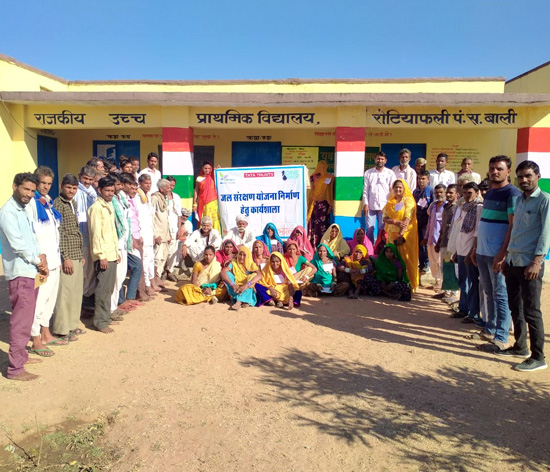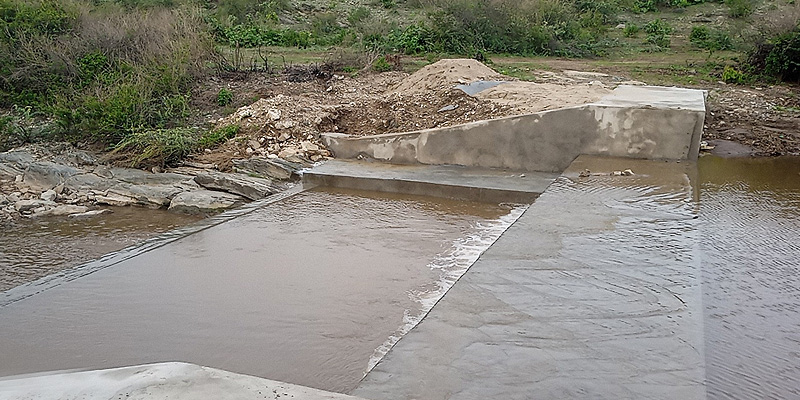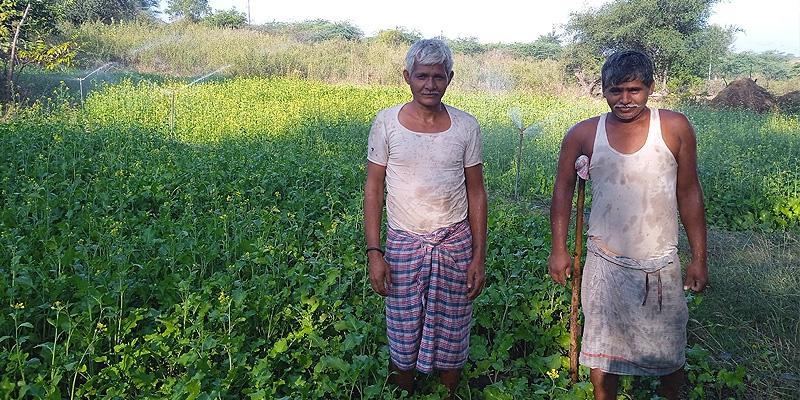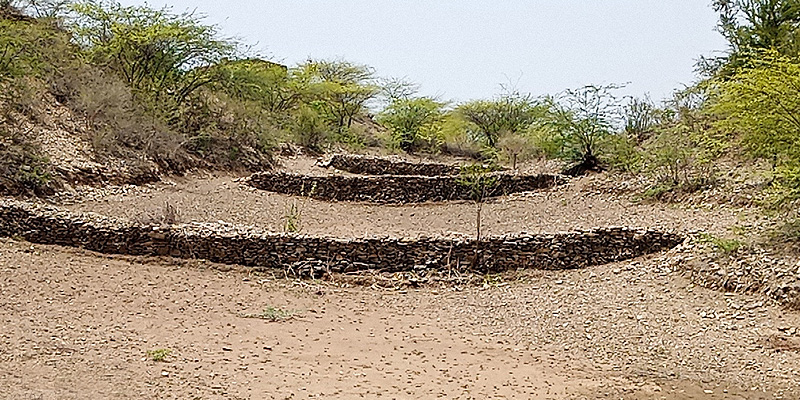
In the heart of Rajasthan, lies Bharla village, home to a vibrant tribal majority community. The distinctive topography and beautiful hilly terrain give Bharla village a pride of place in Central Rajasthan. But for the 1,400 residents of the village in Bali district, this beauty comes at a price. Undulating hills and a unique landscape make water absorption a pressing issue, particularly for farmers who face acute water scarcity during the crucial Rabi crop season. The terrain hampers rainwater absorption and causes water to runoff and flow into rivers and drains. What’s more, sandy and rocky soil tends to restrict water absorption into the soil.
It starts with a drop
After living with water scarcity for years the situation was now becoming critical. It was time to understand the problem and to find solutions from those who knew the land and terrain best. Centre for Microfinance (CmF) and Tata Trusts brought Bharla under its Phase-2 WaSH programme, aimed at specifically discussing water, sanitation, and hygiene issues in rural areas. They actively worked with the villagers to develop an understanding of the importance of water and the need to conserve it, especially in today’s world. CmF conducted a three-day workshop on water security planning to address the issues surrounding water scarcity and zero in on the factors causing it. Over 40 villagers participated in the workshop, eager to find solutions to their water woes.
Over three days, organisation representatives and villagers studied the terrain and the practices followed by the farmers. They realised there was an imbalance between water inflow and expenditure, especially in agriculture where flood irrigation was the norm. Organisation representatives emphasised that it was time for a change and convinced the villagers to take action to prevent acute water scarcity in the village. The villagers formed the Water Security Committee with over 20 proactive members determined to make a difference in their water problem.
Now that the problem was clear, the committee swung into action trying to find solutions. They focused on approach of water harvesting and conservation integrated with promotion and adoption of water efficient agricultural practices and technology and even educating the community about available government-endorsed water-saving technologies and schemes. The committee identified three locations for rainwater harvesting structures and with CmF’s technical support, renovated these sites. The construction cost of the three sites was covered by the community (5%) and CmF (95%), and this joint effort resulted in the recharge of 3.7 crore litres of water into the ground this year, alone. Open wells and bore wells saw a marked increase in water levels, too!

Every drop counts!
After tasting immediate and tangible success, it was time to tackle a few more issues that would help them save their farms from water shortage. The Water Security Committee submitted the Water Security Plan to the local Gram Panchayat and received approval, paving the way for further initiatives like the ongoing work on two earthen dams, to be funded under MGNREGA.

Through the Water Security Planning workshop, farmers realised that their wheat fields were consuming excessive water because of their dependency on flood irrigation. They began exploring and adopting micro-irrigation methods like drip irrigation and sprinklers for their crops. They also shifted from only growing wheat to growing barley, gram, and mustard which are less water-intensive crops, making a seamless transition to sustainable agriculture. Eight farmers decided to put organic practices in place and started Nadep – a natural process to decompose biomass waste, soil waste, and animal waste to organic compost – and using Jeevamrit (liquid organic manure) for their crops. Farmers took to constructing Loose Boulder Check Dams (LBCD) and land levelling efforts in their agricultural fields, to further enhance soil moisture content and individually improve water harvesting on farms. The results were evident as previously uncultivated land now flourished with crops like gram, thanks to improved water availability.

The road ahead
Emboldened by their success, Bharla’s residents are now focusing on creating an annual water budget that takes into consideration precipitation levels and sustainable water practices to ensure strategic use of water in the future.
It took the determination and perseverance of an entire community to understand the problem and right their wrongs to get them on a path of sustainable agriculture. Bharla is now an inspiring example for rural communities everywhere that proves innovation and collaboration can overcome any problem.
